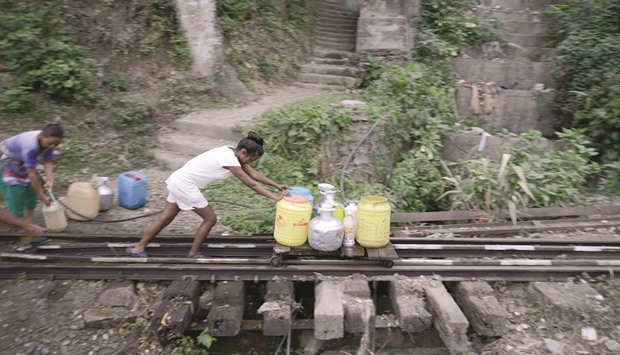It’s already unbearably hot in India. Temperatures are well above average across many parts of the country and there’s no let up on the cards. The heat should be building across India at this time of year, but not to this extreme.
Spring heat is an essential part of India’s climate, because this is what triggers the monsoon rains. They spread across the region due to the difference in heating between the land and the sea, which is why the monsoon is known as the world’s largest sea breeze.
We all know that the land heats up quicker than the sea. After all, at some point most of us have run into the sea on a hot day. We’ve run out of necessity, rather than fun, because the sand has burnt our feet and we know the cooler sea will bring relief. There are many reasons that sand is hotter than the sea, not least because the sea is transparent and continuously moving, so the sun ends up heating a fairly large volume of water, whereas it only heats the top surface of the land.
Similarly, the sun also heats the huge Asian landmass quicker than the Indian Ocean. Hot air rises, so the air over the hot land lifts, and air from over the sea rushes in to take its place. This replacement air has been sitting over the Indian Ocean for months and is laden with moisture. As it moves northwards over land, it brings heavy rain which sweeps across Sri Lanka then northwards through India and into Pakistan.
The heat is therefore vital for the rains to form, but this year the heat has set in much earlier than usual. In some parts of the country, the temperatures have been over 5C higher than the average at this time of year and the weather has already proved deadly.
Given that we live in Qatar, most of us understand the difficulties of dealing with hot weather. Sometimes we hear stories of heat waves in other parts of the world that make us chuckle inwardly, amused that weather we would consider cool, is classed as a heat wave. India, however, is not one of these places. In India, hot really is hot.
On Saturday, April 23, a temperature of 48C was reported in Titlagarh in eastern India’s Odisha state. This is as hot as it typically gets in Doha in the summer. Last year, the official readings taken at Doha Airport only touched 48C once, and that was on July 30. However, whereas in Doha we scurry from one air conditioned building to another, in India, air conditioned buildings are scarce. I bet not many of us would be able to cope without air conditioning for very long in Doha.
The conditions in India are also exacerbated by the fact that much the country is in the grip of a severe drought. The monsoon rains were disastrously below average over the past two years. The government estimates that 330 million people in India are affected by the drought, which incredibly is a quarter of the entire population. The heat will be exacerbating the drought, by accelerating evaporation and dehydrating. This means crops would need more moisture than usual, and locals would need to drink more water to ensure they remain hydrated.
In return, the drought will also be making the conditions of the heat wave more unbearable for the residents. Some wells and rivers have run dry, so the extra water that is required in the heat wave is more difficult to come by. Locals are forced to walk further to find drinkable water or queue longer in the searing heat. This has already proved fatal for some, with tragic stories emerging of children succumbing to heat stress while waiting to collect for water for their families.
Heat stress isn’t always something that happens instantaneously. If the heat persists, it can accumulate over time. The longer the heat wave continues, the worse the conditions become. Last year, a heat wave in the second half of May led to the death of more than 2,500 people. This was India’s second deadliest heat wave on record.
If the heat does continue across the country throughout May, this could turn out to be a major humanitarian disaster. To avoid this, some pre-monsoon showers are needed to cool things down.
When the rains do finally arrive, it is vitally important that they are plentiful. The current drought is so severe that special trains have been commissioned to move millions of litres of water to parts of the country where the wells have run dry. A third year of below-average rainfall would be disastrous.

WATER STRESSED: An Indian resident uses a cart on railway tracks to move containers of drinking water after collection from a water point at Tindharia Hills some 30kms from Siliguri on April 28. The government estimates that 330 million people in India are affected by the drought. Photo by AFP


